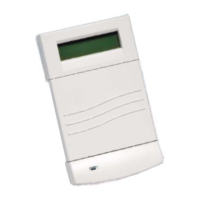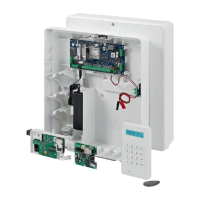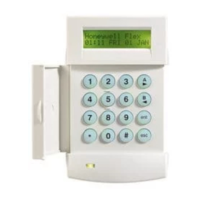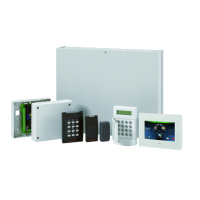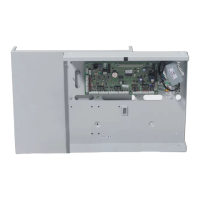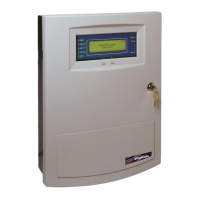GWF-7075 Addressable Fire Alarm Control Panel Manual — P/N LS10147-002GF-E:E 06/11/2019 33
Remote Station Applications Control Panel Installation
4.12.4 Using a MR-201/T Control Relay From Air Products
When the MR-201/T control relay is wired for polarity reversal, it reports alarm and trouble events to a remote site. Alarms will override
trouble conditions and it will not be possible to reset the remote indicator until the condition is cleared and the control panel is reset.
If an alarm condition occurs, the alarm relay will close, overriding the trouble condition.
To install the MR-201/T for polarity reversal, follow the steps below.
1. Wire the MR-201/T as shown in Figure 4.31.
Figure 4.31 Polarity Reversal Connection Using the MR-201/T Relay
2.
Program the NAC circuit for non-silence NAC circuit (see Section 7.5.2).
4.12.5 Transmitter Activated by Dry Contacts
This section describes the connection of a UL Standard 864 listed remote station transmitter to the GWF-7075 FACP dry contacts. The
FACP contacts must be supervised by the remote station transmitter module using end-of-line resistors (ELRs) with a value determined
by the transmitter manufacturer. Power is also provided by the remote station transmitter manufacturer. Refer to the remote station trans-
mitter manufacturer’s manual for details.
Figure 4.32 Remote Transmitter Connection to GWF-7075 Dry Contacts Diagram
• Current:15mA max. • Operating Voltage:24VDC nominal; 27.4 VDC max.• Resistance:4KΩ
UL Listed
EOL
UL Listed
EOL
To Remote
Receiving Station
Intended for connection to a
Polarity Reversal Circuit of a
Remote Station Receiving Unit
with a compatible rating.
NOTE: If you need to transmit supervisory or trouble conditions, you must add more relay modules. Use relay 1 to transmit
supervisory conditions. Use the trouble relay to transmit trouble conditions.
Typical
Input
Zone
Triggers
Trouble Relay
Note: The Trouble Relay is a fail-safe relay.
With power applied to the FACP and no
troubles in the panel, the contacts should
be in the condition indicated in the drawing.
CAUTION:
Do not use looped wire below terminals
for the following:
- System Supervision
- Terminals labeled Relay 1, Relay 2
- Trouble
Break wire run to provide supervision of
connections.
Supervision Relay
Alarm Relay
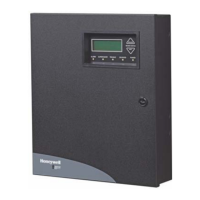
